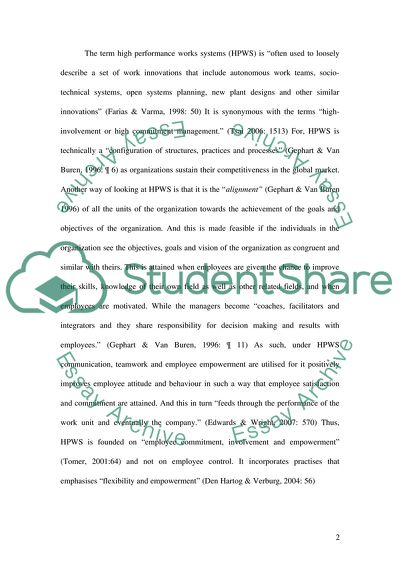Cite this document
(“High-Performance Works Systems Essay Example | Topics and Well Written Essays - 1250 words”, n.d.)
High-Performance Works Systems Essay Example | Topics and Well Written Essays - 1250 words. Retrieved from https://studentshare.org/human-resources/1547665-what-are-high-performacne-work-systems-hpws-and-what-are-their-relationship-to-human-resource-strategy-in-you-answer-you-should-you-case-study-examples-of-hp
High-Performance Works Systems Essay Example | Topics and Well Written Essays - 1250 words. Retrieved from https://studentshare.org/human-resources/1547665-what-are-high-performacne-work-systems-hpws-and-what-are-their-relationship-to-human-resource-strategy-in-you-answer-you-should-you-case-study-examples-of-hp
(High-Performance Works Systems Essay Example | Topics and Well Written Essays - 1250 Words)
High-Performance Works Systems Essay Example | Topics and Well Written Essays - 1250 Words. https://studentshare.org/human-resources/1547665-what-are-high-performacne-work-systems-hpws-and-what-are-their-relationship-to-human-resource-strategy-in-you-answer-you-should-you-case-study-examples-of-hp.
High-Performance Works Systems Essay Example | Topics and Well Written Essays - 1250 Words. https://studentshare.org/human-resources/1547665-what-are-high-performacne-work-systems-hpws-and-what-are-their-relationship-to-human-resource-strategy-in-you-answer-you-should-you-case-study-examples-of-hp.
“High-Performance Works Systems Essay Example | Topics and Well Written Essays - 1250 Words”, n.d. https://studentshare.org/human-resources/1547665-what-are-high-performacne-work-systems-hpws-and-what-are-their-relationship-to-human-resource-strategy-in-you-answer-you-should-you-case-study-examples-of-hp.


